Film; Manifesto
June 19, 2008
The following is from an email I just typed up for a friend who asked about some of my recent photographs. It turned into a bit of a…well, you decide:
–
I take pictures with Fuji Velvia 50 ISO slide film; have been doing so for a decade. Velvia is inherently: saturated color, gorgeous at dusk, high-contrast, pure blacks. The intensity results from both its “slowness” (slower films being richer in general, higher contrast, more colorful) but also its being a slide film (positive film “starts” from black and gets lighter with exposure instead of the other way around with negative film–which means that getting a pure black on negative film is a lot harder).
Velvia is, in the parlance of photography nerds, “dense.” This is sort of physically true: a frame of Velvia seems to weigh more. It’s hard to scan, requiring a scanner that cost as much as my MacBook Pro and has the best dynamic range in the market, and tends to veer off wildly blue and require a lot of finicky correction work in Photoshop (a recent quote on a user forum: “the achillies heal [sic] of the Velvia50…horrendous to scan if you are not experienced.”).
Taking the “Burger Deli” photo mostly required laying on my stomach on a highway and being brutally assaulted by mosquitoes. I’m so used to Velvia that most other pieces of the task are formulaic: I know its reciprocity failure characteristics (this 4-second shot I overexposed by half a stop to compensate), I know the ideal contrast between lights and sky that will render best.
Another important thing of note is the vastly important difference between twilight and night. Almost all of my photographs are taken in a madcap twenty-minute sprint, more like ten minutes in the winter (dusk lasts longer in the summer). This can make one a bit neurotic. But someone already stole the quote I would have invented on my own (I can’t remember who said it), that one isn’t photographing an object, but the light that falls on said object. So I can’t photograph at pure night; it looks bad.
Haloing happens naturally as the brighter parts of the image (usually artificial light or the sun) “blow out”, getting over-exposed to the point that the film kind of gives out. In my experience you cannot replicate the softness you see here with digital. Film seems to glow, have indistinct edges, tolerate extremes better, and O!, the color.
If one were to zoom in and in on my full-resolution scans (at 4000dpi) you’d see grain–though not much. Velvia is the “highest-resolution” film on the market, insomuch as you can use resolution to describe film (slow films have tighter grain in general). You can get about 32MB of data out of a single 35mm frame–that’s more than any (at least widely-available) digital camera can give you. I don’t even know the theoretical maximum for medium format varieties of Velvia (6x6cm)–I shot some of that this weekend, too, but have not yet scanned it.
Not that I’m really that ratcheted up over resolution. It’s more that I think grain is elegant, chaotic, random, and lovely. In my aesthetic, digital’s noise is…not pretty. Digital noise in reds, greens and blues looks hard, like fluorescent lights (a subject I won’t dive into here because I tend to rail).
The rest of the picture is built of reliable, but extraordinarily simple equipment. I hate gear–another reason I make a failure of a digital photographer. I use a Canon EOS A2 that I bought in 1997. Once I had to have a minor repair of a dial but that has been the only moment of frustration. Its light meter is my favorite part; I think it might be sentient. I’ve had the same Bogen tripod even longer (although its number is almost up…it’s getting crotchety). As for lenses, I only have two: a 100-300mm I bought on the Internet in the late 90s (and rarely use, really) and my beloved 17-40mm (a gift from Hoenig). I shoot almost everything in very wide angle. I’m a 17mm whore. I’d like to get a fixed, fast 50mm lens one day, I suppose. I *really* want a graduated neutral density filter (.9 factor) in 72mm, but that’s quite dorky.
Tripod, tripod, tripod! I get strange looks when co-photographing with digital people. They are popping off dozens of shots–as they should–click, click, click, getting every possible exposure and angle–in the same amount of time I (extending my tripod, considering aperture, dawdling) I take to capture one frame. I almost never take more than two or three shots of the same thing, which means I’m over-confident in my light metering and theory. This hubris is often met with failure. But, I do end up with more than the average number of good shots per roll.
I enjoy the risk of film. Recently at a conference I got gawks from professional, journalistic photographers who were almost personally offended that I would take the danger of traveling with film. Granted, I don’t encounter nearly as many X-rays as they do, but even so, part of the thrill is in the possibility that a sudden swipe of heat, rays, shock, accidental opening, double exposure, or any number of other hazards. I work blind, when compared to the digital corollary; I have no immediate ability in the field to tell if what I just did worked. I have to wait. As the world’s most impatient person, I consider this to be good for my character.
In more primal terms, I love the bottomless indigo of the sky at twilight. And the complementary color, which just happens to be that of headlights (thought not Xenon or other hot-light headlights). I also love reflections and reflections of reflections and natural framing elements. I like it when I don’t know exactly what color an artificial light will render: generally bright green for bright spotlights, brilliant orange-yellow for sodium lights. I like that color-shift in long exposures takes stuff for a wild and unpredictable ride.
Finally, in terms of motivation, I usually want to include a temporal dimension in my images. I like to capture a still scene over time. The Impressionists, who embraced photography with great gusto because it caught such a discrete and quick snippet of reality, would hate my approach, which, instead of looking for a quick dash of something, aims to stretch out the experience of a place. I like the combative tugs of unique moment versus constancy. Much of the time I’m looking to simplify, abstract-ify, chucking as much stuff as possible from the frame until I’m left with something vaguely Rothko. Things glow when they’re slow. I love the spread and blur of light.
I need to divest people of any sense that I think film is better than digital. Not at all. I am probably a peculiar, vestigial remnant of an archaic medium. I love technology. I love the notion of digital photography. I just a) can’t get it to do what I’m used to (see? I can’t evolve!), and b) have effectively no disposable income at the moment and the $3-5k tag on the cheapest camera that would suffice in my esteem is just not realistic.
6 Comments
Related Posts
- My Theory about Film
December 27, 2006 - Photo: Ben and I, Fremont Bridge
September 28, 2010 - Photo: Grain sunset
December 27, 2009 - Canon 5D Mark 2 Day 2: Photo of the Day? And Why I Paid So Much for a Camera
January 11, 2009 - I'm Still Obsessed with Fujifilm Fuji Velvia 50 RVP Reversal Professional Slide Film OMG
July 6, 2007


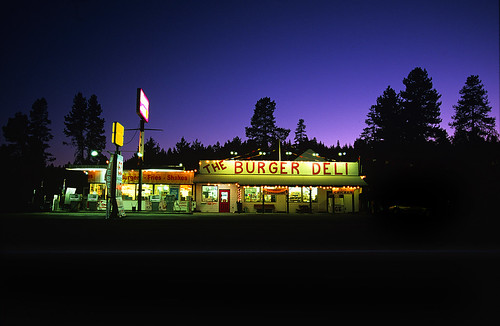

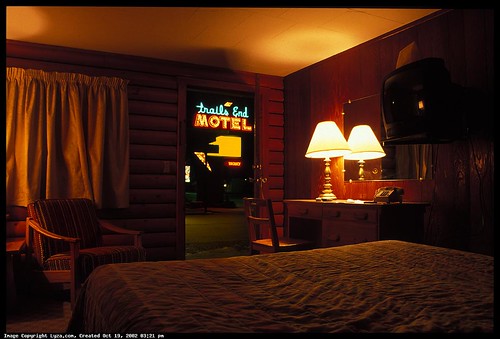
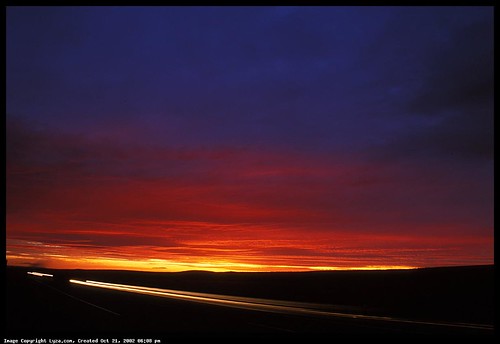
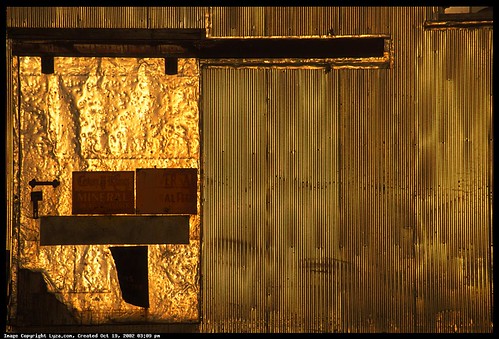
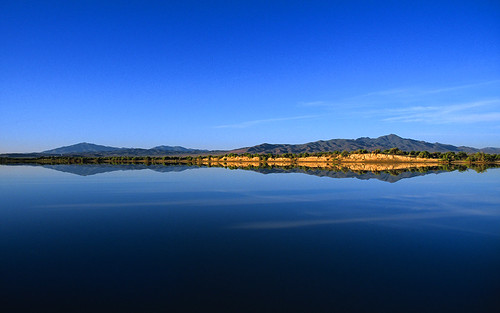
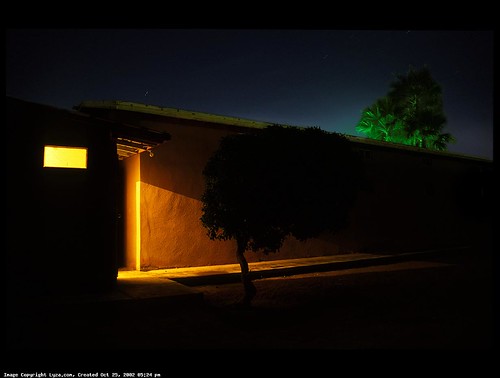
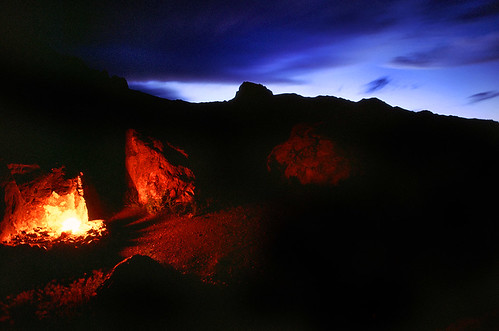
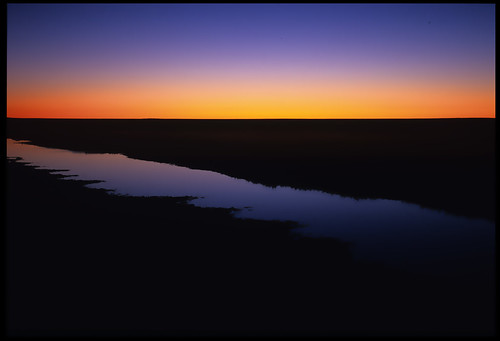
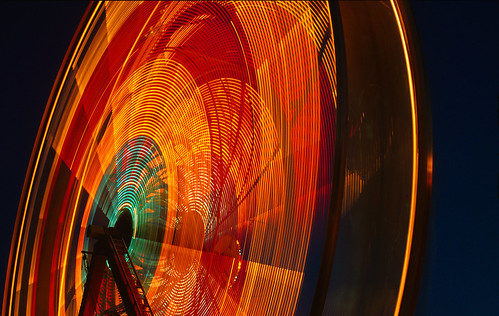
An interesting read. I appreciate you expressing your thoughts on film. I’ve admired your photos for a while on Flickr. This resonates with me as I am also very fond of film and appreciative of the grain it provides. I also enjoy the risk of film, the time it takes to take a photo and the limit of the film frames I have. I used a digital SLR for a year before reverting to film. I have an even more pronounced dislike of gear and shoot with only one rangefinder camera and one 50mm prime lens. I’m hoping to experiment with a wider lens this summer. Interestingly, the photos I love to take are the exact opposite in terms of their temporal quality. I go for the “moment”, so dear to street photographers.
i actually really feel that working with film is more in keeping with capturing a distinct moment in time with intent and patience. moreover it often creates a more profound emotional impact from the resulting image. something inherent to the risk of film speaks to the utterly transitory nature of the moment you are capturing.
all of these photographs have a powerful sense of place and texture, depth and scope i have never seen in images snapped casually. i am a great lover of casual snapshots (not least because this is all i am capable of managing personally) but these are beautiful and moving in a way no snapshot ever was.
Like Samgrover, I, too, shot for a while with a digital SLR (a Canon 10D, which was the “prosumer*” model of the time) and then sold it and went back.
I am very much an admirer of the street photography ethic. I wish I had the talent for it, but it’s not my path currently.
There are serious drawbacks to my approach. I essentially only take photographs when I’m traveling, outdoors, and when it’s summertime. Can’t do portraiture when you have candy-jewel colors; can’t do anything in low light without a tripod.
*Please forget I ever used this vile piece of newspeak.
I’ve dug your photos for a long time, Lyza, and I’m really glad to hear you talk about your equipment and what goes into taking such incredible pictures. I wonder: do you use a graduated color filter at all? I see such incredible depth of colors in they sky portions of your shots and despite my attempts with Velvia 50 I never seem to achieve such things.
Speaking of Velvia, did you ever get the chance to shoot with Fortia? They put it out for a few months a few years ago, and this supposedly was Velvia on crack.
Nice rant! I still really really like the carnival shots, because of the black vs. the neon and the streakies.
Velvia is the bomb! Film shooters will become more unique/rare as time goes on. No need to apologize. As to gear hating, you don’t need much. What you have seems to work well for you but it’s always good to explore other creative options. Medium format is wonderful and very affordable. Ever shoot with a Rolleiflex TLR? The are wonderful simple machines. My fave is mr Rolleiflex SL66. Nice images!